Don't Expect a Landmark Court Case From the Uber Self-driving Car Death
It had all the hallmarks of a groundbreaking case, one that might define the hazy legal boundaries that exist at the dawn of the autonomous vehicle age. Instead, a settlement.
The death, earlier this month, of 49-year-old Elaine Herzberg at the self-guided hands of an Volvo XC90 operated by Uber Technologies Inc. in a Phoenix suburb immediately sparked questions of who was at fault. The company operating the pilot project? The automaker that supplied the vehicle for conversion to autonomous drive? The suppliers of the sensors and software needed to turn the SUV into a robot? Road and light conditions? The pedestrian? Or, perhaps, the human occupant whose eyes weren’t on the road prior to impact?
Questions still swirl around why the Uber vehicle’s sensors didn’t recognize the woman crossing a darkened highway with her bicycle, but we won’t hear them answered in a courtroom.
Self-driving Company Waymo to Buy Thousands of High-end, Sporty Jaguar EVs for Taxi Service
Let’s hope future robo-taxi passengers appreciate a sport-tuned suspension and crisp driving dynamics, because there’s a slim chance they’ll notice it when shuttling around in a driverless Jaguar.
On Tuesday, Waymo, autonomous car unit of Google, announced its intent to purchase up to 20,000 Jaguar I-Pace electric crossovers for its future fleet of AV EVs. Fitted with an array of self-driving hardware and software, Waymo says the cars will hit the road in 2020. Testing begins this year, which has us wondering what kind of wait a regular I-Pace customer faces.
Arizona, Suppliers Unite Against Uber Self-driving Program
Ever since last week’s fatal accident, in which an autonomous test vehicle from Uber struck a pedestrian in Tempe, Arizona, it seems like the whole world has united against the company. While the condemnation is not undeserved, there appears to be an emphasis on casting the blame in a singular direction to ensure nobody else gets caught up in the net of outrage. But it’s important to remember that, while Uber has routinely displayed a lack of interest in pursuing safety as a priority, all autonomous tech firms are being held to the same low standards imposed by both local and federal governments.
Last week, lidar supplier Velodyne said Uber’s failure was most likely on the software end as it defended the effectiveness of its hardware. Since then, Aptiv — the supplier for the Volvo XC90’s radar and camera — claimed Uber disabled the SUV’s standard crash avoidance systems to implement its own. This was followed up by Arizona Governor Doug Ducey issuing a suspension on all autonomous testing from Uber on Monday — one week after the incident and Uber’s self-imposed suspension.
LIDAR Supplier Defends Hardware, Blames Uber for Fatal Crash [Updated]
Parts supplier Velodyne Lidar Inc. has come out against Uber Technologies following the release of video footage showing one if its autonomous test vehicles fatally striking an Arizona woman this week. Marta Thoma Hall, president of Velodyne, said she was confused as to why the autonomous SUV failed to see 49-year-old Elaine Herzberg crossing the street.
Velodyne, which supplies autonomous sensing equipment to many of the world’s automotive and tech firms (including Uber), is currently cooperating with federal investigators to determine what happened in Tempe, Arizona, on Sunday evening.
Spot the Changes: 2019 Ford Fusion Gains Newish Face, Plug-in Version Now Takes the Long(er) Way Home
Squint harder. Yes, there are changes afoot in the 2019 Ford Fusion’s visage, though you’ll be forgiven if you can’t spot them from across the Lowe’s parking lot.
The automaker released images and information for the lightly refreshed model on Tuesday, ahead of its official debut at the upcoming New York Auto Show. Besides styling tweaks designed to keep things young and pert, all 2019 Fusion trim levels boast one of Ford’s new Co-Pilot 360 suite of driver assist features — even the lowly S model. For green car aficionados, the Blue Oval added an extra helping of electrons to the plug-in hybrid Energi model. Expect to burn ever so slightly fewer gallons of gas in a given year.
For now, Ford isn’t saying what others have: that this might be the last Fusion we ever see.
Unpacking the Autonomous Uber Fatality as Details Emerge [Updated]
Details are trickling in about the fatal incident in Tempe, Arizona, where an autonomous Uber collided with a pedestrian earlier this week. While a true assessment of the situation is ongoing, the city’s police department seems ready to absolve the company of any wrongdoing.
“The driver said it was like a flash, the person walked out in front of them,” explained Tempe police chief Sylvia Moir. “His first alert to the collision was the sound of the collision.”
This claim leaves us with more questions than answers. Research suggests autonomous driving aids lull people into complacency, dulling the senses and slowing reaction times. But most self-driving hardware, including Uber’s, uses lidar that can functionally see in pitch black conditions. Even if the driver could not see the woman crossing the street (there were streetlights), the vehicle should have picked her out clear as day.
Self-Driving Uber Vehicle Fatally Strikes Pedestrian, Company Halts Autonomous Testing
In the evening hours of March 18th, a pedestrian was fatally struck by a self-driving vehicle in Tempe, Arizona. While we all knew this was an inevitability, many expected the first casualty of progress to be later in the autonomous development timeline. The vehicle in question was owned by Uber Technologies and the company has admitted it was operating autonomously at the time of the incident.
The company has since halted all testing in the Pittsburgh, San Francisco, Toronto, and greater Phoenix areas.
If you’re wondering what happened, so is Uber. The U.S. National Transportation Safety Board (NTSB) has opened an investigation into the accident and is sending a team to Tempe. Uber says it is cooperating with authorities.
Video: Google's Waymo Exhibits the Total Lack of Excitement Inside Driverless Cars
After getting the go-ahead from Arizona, autonomous tech firm Waymo has implemented the first ride-hailing service in the country that doesn’t employ human drivers. One month after securing approval, and with no major incidents to date, the company has begun offering its autonomous taxi service to paying passengers. On Tuesday, Waymo CEO John Krafcik gave a speech at South by Southwest (the indie music festival that evolved into a media and tech bonanza) to showcase how things were getting on.
He said Waymo ditched the Phoenix test drivers and is readying its fleet of driverless Chrysler Pacificas for other parts of the country. The festival was then treated to a short video of passengers yawning. Those yawns are actually trumpets, however, heralding the introduction of autonomous vehicles in North America.
GM Preparing to Rent Your Car: Report
Only if you choose to, it seems. After launching its Maven ride-sharing service in numerous U.S. cities, as well as Canada’s largest population center, sources claim General Motors wants to expand the service to privately owned vehicles.
In other words, you’ll be able to make your own GM car available via the automaker’s app-based Maven service, generate income from short-term renters, while GM takes part of the cut. If the plan goes ahead, let’s hope your renters aren’t as slovenly as these ones.
Subaru Exec Spins Frightening Vision of a Stickless Future
Is Subaru, a scrappy-but-approaching-the-mainstream automaker, about to ditch the manual transmission? That’s what some are gleaning from comments made by Subaru UK managing director Chris Graham on the sidelines of the Geneva Motor Show this week.
Speaking to Auto Express, Graham mused about the brand’s EyeSight driver-assist technology and Subaru’s desire to include the suite of safety aids on all of its cars. The trouble is, EyeSight isn’t available on Subarus equipped with manual transmissions. If you’re looking for goodies like automatic emergency braking and lane departure warnings, a Lineartronic CVT had best be on your wish list, too.
Graham’s comments point to a Subaru that’s prepared to weaken the bond between driver and car in the name of increased computerized control.
Tesla Reverses Stance on Event Data Recorders, Releases Tool
We’ve criticized Tesla for its lack of access to crash data in the past, but it appears the company has now performed a complete U-turn. Tesla now admits all of its current vehicles have an Event Data Recorder (EDR) device, and it’s now offering an inexpensive tool to allow customers to access the logs.
Tesla previously stated it did not have an EDR device as defined by the 49 CFR 563 of the EDR rule, but new documents released by Tesla shows all of its current and previous vehicles — other than the first generation Roadster — actually do employ such a device. The company has released a helpful guide and free software to analyze the logs, along with a link to purchase compatible equipment.
Safety Group to Senate: Clue in to the 'Baseless and Exaggerated Predictions' Swirling Around Autonomous Vehicles
Last year, the National Highway Traffic Safety Administration embraced autonomous technology by redefining how it categorized cars. Spurred by automakers and tech companies, the government has opened its eyes to this new technology and seen it as a way to potentially save lives by reducing the number of roadway accidents caused by human error.
Congress has been confronted with numerous pieces of legislation on the matter, too — prospective laws that would allow automakers to put hundreds of thousands of autonomous vehicles on the street, without the need to adhere to existing safety regulations. Many have called the move necessary if the United States hopes to be the first country to produce a truly self-driving car and start saving some lives.
It sounds almost too good to be true, and some claim it actually is. A group of public interest organizations is attempting to sound the bullshit alarm, claiming automakers are misleading government officials in the hopes of developing and profiting from unproven technology.
Cadillac President Attributes 'Measured Approach' to Super Cruise Success, Gently Slams Tesla
Speaking at a conference in California on Wednesday, Cadillac President Johan de Nysschen threw some gentle shade at his rivals by stating General Motors’ measured approach to hands-free driving was the secret to Super Cruise being a winner. For those of you that don’t know, Cadillac claimed it became the first automaker to accomplish a coast-to-coast drive using hands-free technology last fall.
While it’s debatable whether the Super Cruise equipped CT6s making the journey actually achieved the feat without a driver ever having to touch the steering wheel, GM’s semi-autonomous system is among the best in the business right now — if not the best.
How did it manage the feat? For the most part, Cadillac built on the technology it already had to fine-tune adaptive cruise control to a point where the car could effectively steer itself on predictable highway jaunts. But de Nysschen says it mastered that in a closed environment, waiting until the system was completely ready. Meanwhile, other areas of General Motors have been devoted to total autonomy and perfecting the Cruise Automation fleet’s artificial intelligence systems.
Geely Group Owner Enjoying His 103,619,340 Shares in Daimler
Unlike German auto titans BMW Group and Volkswagen Group, Mercedes-Benz parent company Daimler didn’t have the stabilizing effect of a family or individual with a massive, long-term cache of company shares. That’s no longer the case, as Geely Group owner Li Shufu has announced his purchase of a 9.69 percent stake in the German automaker.
This makes Shufu Daimler’s largest single shareholder.
The Chinese auto tycoon, whose Zheijang Geely Holding Group manages car-producing Geely Group, already owns Volvo Cars and Lotus, and is a major shareholder in truck builder Volvo AB. Always on the hunt for opportunities, the near 10-percent stake in Germany’s largest luxury automaker should give Shufu the partnership he’s looking for.
Automated Cars Are Not Able to Use the Automated Car Wash
We’ve been cautiously optimistic about the progress of autonomous driving. The miraculous technology is there, but implementing it effectively is an arduous task of the highest order. A prime example of this is how easy it is to “blind” a self-driving vehicle’s sensors.
TTAC’s staff has had its share of minor misadventures with semi-autonomous driving aids, be it during encounters with thick fog or heavy snow, but truly self-driving cars have even more sensitive equipment on board — and all of it needs to function properly.
That makes even the simple task of washing a self-driving car far more complicated than one might expect, as anything other than meticulous hand washing a big no-no. Automated car washes could potentially dislodge expensive sensors, scratch them up, or leave behind soap residue or water spots that would affect a camera’s ability to see.
Audi Launching Vehicle-integrated Toll Technology in North America
Depending on where you live, toll roads might be a significant part of your driving life. There are a few ways to handle these moderate annoyances. You can carefully plot your course to avoid them, adding time to the journey and eventually trapping yourself in a situation where you’re scrambling to find enough change under your seat to appease I-95. However, a better solution would probably be to have some cash on hand, or maybe pick up one of those ugly boxes used for electronic toll collection.
E-ZPass, QuickPass, SunPas FasTrak, TxTag, and every other electronic collection measure require that you adhere a card or unsightly hunk of plastic to your vehicle’s windshield. While they don’t take up a lot of space, their placement can sometimes impede visibility and the cheap white plastic is bit of an eyesore — especially in a well-appointed interior.
Audi says it’s through with them and plans to launch an automated toll payment technology, integrated in the car’s rear-view mirror, for North American models. It might be one of the most mundane problems currently facing motorists, but somebody had to solve it.
Cycling Pileup Shows the Unexpected Dangers of Vehicle Safety Aids
Thanks to a pact among the world’s largest automakers, automated emergency braking will soon be standard kit on nearly every new vehicle, paving the way for a future of collision-free bliss. That’s the plan, anyway. While undoubtedly a valuable addition to the automotive landscape, self-thinking vehicle safety systems sometimes reveal their dark side.
That’s what happened Wednesday during the Abu Dhabi Tour — a big-deal cycling race in a locale where hydration no doubt takes on new importance. Fluids weren’t top of mind for five of the cyclists, however, as their race was cut short by a Mercedes-Benz with a mind of its own.
After Falling Out of Love, Porsche's Diesel Divorce Is Now Complete
It always felt little odd whenever a diesel-powered Cayenne sidled up to you next to a stoplight. A Porsche that builds SUVs, we used to mull, and diesels, no less!
The public’s discomfort with a German sports car maker entering the utility vehicle field is long gone, and we can now say the same for Porsche’s short-lived dalliance with diesels. The automaker has stated it’s pulling its last remaining oil-burning models off the market.
A new Porsche is born, cleaner, but perhaps no purer.
'Artisanal' Child Labor Business Booming, Thanks to Electric Vehicle Renaissance
Electric cars have been praised as the future savior of mankind for quite some time now, but only in the last few years have mainstream automakers promised to drive headlong into EV production. Governments around the globe encourage the transition. The reality of battery production isn’t so clear-cut, however. Unless you make your daily commute in a Mack truck, odds are good that swapping to a sparkly new four-door with a lithium-ion battery isn’t going to be better for the environment.
Currently, it takes substantially more energy to produce an electric car than a conventional internal-combustion model. EVs sourcing their energy from fossil fuel-burning power plants aren’t much better for the environment than something that runs off pump gas. In addition to that, defunct batteries have to be recycled or they become environmental hazards — and no one has quite figured out the best way to do that yet.
There’s also the issue of sourcing the materials for those batteries. EV cells need scarce precious metals like nickel and cobalt. Those materials take a lot of energy to harvest and have, unfortunately, led to an increase in child labor rates in Africa.
Infiniti Wasn't Fibbing When It Estimated the Revolutionary QX50 Engine's Thirst
One thing is clear — with variable compression comes a newfound lack of thirst.
Infiniti’s previous midsize QX50 crossover didn’t astound in its thrift, garnering 20 miles per gallon on the EPA combined cycle. The move to a new, front-drive platform and addition of a years-in-the-making gasoline engine for 2019 has done wonders for the model’s drinking habit, however, and Infiniti engineers pegged the MPG figures right on the nose.
With the 2019 QX50‘s fuel economy now confirmed by the EPA, it begs the question: just how much of the model’s thriftiness can the variable compression engine take credit for?
Talk to Me, Like Drivers Do: Ford Comes Up With a New Way to Open a Door
The relationship between humans and cars is poised to become quite different in the years to come, or so the automakers warn promise us. Autonomous vehicles will whisk us to whatever destination we desire, simply by inputting our desired address into a navigation system or, perhaps, just by speaking it aloud. Already, the level of communication between humans and the modern car astounds.
We’ve come a long way from Chrysler’s Electronic Voice Alert, that nagging companion of the 1980s.
Now, Ford Motor Company looks ready to take our current relationship to the next level, while putting the human in charge. A U.S. patent published today describes a car that opens its doors only when it hears its master’s voice. And by “open,” we mean wide open, not just unlocked.
Daimler Might Expand Its 'Mobility Services' Through an Unlikely German Ally
Automotive soothsayers have foreseen the coming Armageddon, where private car ownership vanishes and we’re all ferried around in robotic taxis or rental vehicles, and manufacturers have taken their divinations to heart. Either that, or the opportunity to diversity already successful companies is too tempting a prospect to pass up. As such, we’ve seen “mobility” become the new industry buzzword — used as a fill-in for electric vehicles, autonomous development, and ride-sharing/hailing programs.
Hoping to expand its own mobility services, Daimler has announced an openness to seek broader alliances just days after BMW Group bought out its rental car partner, Sixt, from their joint car-sharing program DriveNow. That sets the stage for a peculiar partnership, as the two German automakers have a long, competitive history with each other — one which sometimes results in passive-aggressive behavior.
Hide and Seek: GM Seeks Patent for Vehicle-to-Pedestrian Communication
Here at TTAC, we sometimes offer up a story published by a sister publication after deciding it’s something worthy of your time. This piece, published by GMInsideNews, fits that bill. While the soulless autonomous future scares many of us, General Motors is working on a way to stop those driverless cars from plowing over each and every one of us. Read on.
General Motors continues to pour money and time into perfecting vehicle autonomy.
One of the integral themes of an autonomous driving future is communication. Vehicles will be required to rapidly and constantly talk to one another, relaying position, speed, and intent, with the same demands applying to our roadways and intersections — which will be expected to relay weather, traffic, and safety information in real time as vehicles approach.
Pedestrians, however, pose a unique problem. In busy cities, pedestrians and drivers routinely communicate nonverbally by making eye contact or gesticulating, but an autonomous vehicle doesn’t have that privilege. Its machine code is dependant on a series of binary questions it must ask itself in order to determine if the person is a threat, which — if affirmative — currently results in the car coming to a halt, which on occasion has caused a rear-end collision, or two.
Well, GM is working on a system in which autonomous vehicles will be capable of better understanding the motions of pedestrians by communicating with their Internet-connected devices, be it smart-phones, wearables, or perhaps even future advancements made towards transhumanism.
Ford Wants Far Less Metal in Its Cylinder Heads
Iron or aluminum? For cylinder head construction, that’s the basic menu we’ve long grown used to. There’s advantages and drawbacks to both. Aluminum is lighter, but more prone to warping. Iron is stronger but heavier, with low thermal conductivity. Both materials are prone to the ups and downs of the commodities market, frustrating beancounters working at automakers everywhere.
In a U.S. patent application filed in October and published today, Ford Motor Company’s global tech division proposes something new: a cylinder head containing a barest minimum of metal. Called the Hybrid Composite Cylinder Head, most of the component’s bulk is made up of polymer composite, not aluminum or iron.
What Happens When Two Lyft Drivers Collide?
True story: when my pal “Creighton” decided to start using his Charger Hellcat for Uber, he called his insurance company and had them upgrade his policy to commercial status. Doing so pretty much wiped out any profit that he was going to make as an Uber driver, but he still made the call because he’s the kind of person who doesn’t like to take unnecessary risks.
Getting rideshare-specific insurance isn’t always prohibitive, but during my conversations with various Uber and Lyft drivers I’ve yet to hear of anybody besides Creighton actually ponying-up for real additional coverage. Most of these people are living pretty close to the bone and they don’t really think they have that much to lose in the first place. Plus, there’s the fact that both Uber and Lyft offer some additional coverage as part of their driver agreement.
That’s the theory of it, anyway. What happens when two Lyft drivers collide? Yesterday, someone found out.
Waymo to Purchase 'Thousands' of Chrysler Pacificas for Self-driving Duty
Waymo, the self-driving division of Google’s parent company Alphabet, just announced it has reached a deal to purchase a buttload of Pacifica minivans from Fiat Chrysler Automobiles. Alright, to be fair, it didn’t actually use the term “buttload.” It said Chrysler would provide “thousands” of units, which will ultimately be outfitted for autonomous driving.
Unfortunately, neither company seems willing to disclose an official count. Waymo currently has around 600 self-driving Pacificas in its fleet, so even an extra thousand vehicles would equate to a multi-million dollar deal and the exponential growth of its autonomous development program.
“With the world’s first fleet of fully self-driving vehicles on the road, we’ve moved from research and development to operations and deployment,” Waymo CEO John Krafcik said in an official statement. “These additional vehicles will help us scale.”
Yet More Evidence That America's Car Addiction Is Not About To Die
New York City and San Francisco, besides having the most tailored beards and bike activists on both coasts (Note: Portland might have something to say about this) might not like some of the data emerging from the University of Michigan.
While some Millennials, especially ones working at startups and paying the equivalent of a Cadillac for a shoebox apartment in a trendy, upcoming part of their building, might think personal car ownership is as dated a concept as VCR tapes and telephone banking, there’s a vast gulf between that lifestyle and that of the average American. It’s clear to see in the U-M Transportation Research Institute’s latest findings.
The data also pours a cold glass of asparagus water over an earlier poll that suggests we’re poised to kick car ownership to the curb.
Idiots Need to Understand That Self-driving Cars Aren't Here Yet
With automakers, the Department of Transportation, NHTSA, and Congress all attempting to get self-driving vehicles onto the road as quickly as possible, the autonomous revolution finds itself in a sticky situation. Some motorists are confusing their semi-autonomous technology with an impenetrable safety net. This has resulted in avoidable accidents as drivers assume their high-tech cars can cope with whatever’s thrown at them, and it’s probably going to get worse as more idiots buy them.
We’ve already covered how semi-autonomous features make everyone less-effective behind the wheel and the fatal Tesla Autopilot crash was a story we kept up with for over a year. Investigators ruled that accident was the perfect storm of mishaps, however, there remains a common thread between the two pieces. The driver may have been spared were he not so eager to put his faith into the vehicle’s semi-autonomous system.
On Monday, a Tesla Model S collided with stopped firetruck that was responding to an accident on a freeway in Culver City, California. As you already guessed, the driver told the firefighters that the vehicle was operating in Autopilot mode. While nobody was injured in the crash, it’s another stroke in the ugly portrait of people placing blind trust in a technology they don’t understand. And, boy oh boy, are we just getting started on illustrating this problem.
Senate Fumbles With Self-driving Legislation
Bipartisan legislation to “promote the safe development of autonomous vehicles” is currently being held up by a trio of Democrats, according to U.S. Senate Commerce Committee Chairman John Thune. While much of Congress is hoping to push the AV START Act through, Sen. Dianne Feinstein and two colleagues have blocked unanimous consent — stalling the bill’s swift progress by forcing a floor vote.
Thune, who sponsors Senate Bill 1,885, told reporters he hoped Feinstein and the other Democrats would see the light. “We could save a lot of lives,” Thune said, adding that 94 percent of car crashes are caused by human error. “It is cutting-edge technology, transformational in terms of the economy.”
However, the opposition isn’t convinced autonomous vehicles are at a point where it’s safe to roll them out en masse on public roads.
Automakers Claim Robots Won't Steal Any More Jobs - For a While, Anyway
The car industry was one of the first to employ widespread automation as a way to streamline manufacturing. However, plenty of jobs have been handed over to robots since the 1980s. Cashiers, tollbooth operators, librarians, and practically everyone who has worked in shipping has seen some aspect of their job replaced with automation. But automakers now claim the usefulness of robots has reached its peak — at last for the time being.
In the midst of an autonomous revolution where drivers will be eventually be replaced by computer-controlled vehicles, numerous carmakers suggest robots still can’t substitute humans on the assembly line.
Atlanta Becomes Next American City to Host Waymo's Autonomous Test Fleet
Waymo, the self-driving unit of Google parent Alphabet, is testing the crap out of its ever-growing fleet of autonomous Chrysler Pacificas. While we know the company has already mapped dozens of North American towns, the majority of its testing takes place around Austin, Detroit, Palo Alto, San Francisco, Seattle, and especially Phoenix.
However, today the company tweeted out that it will add Atlanta, Georgia, to that list. Presently, Arizona is the only region where Waymo routinely operates vehicles without a human behind the wheel. But that’s liable to change as the firm gets more testing under its belt. Atlantans may be leaning out of car windows to snap photos of driverless vans soon enough.
Rental Review - Mishaps With Maven
General Motors launched its Maven rideshare service in 2016 with the goal of providing renters with a taste of its vehicles, while also bringing in a little extra revenue. The service offers a wide array of vehicles ranging from small hatchbacks like the Chevrolet Spark to large SUVs like the Tahoe.
The service is available in many larger cities across the country and, since I was visiting Detroit for the auto show, I decided to give it a try to see what a potential renter might encounter. I signed up for the app and rented a couple of vehicles without notifying GM in order to experience the vehicles just as the general public would.
The vehicles were far worse than I expected.
Ram Deploys Unique Air-cooled Motor-Generator System
Earlier today, we found out that the 2019 Ram 1500 will be offered with a mild hybrid option dubbed eTorque. Official fuel economy figures are not out yet, but FCA estimates the hybrid system should show around a 10 percent improvement over current figures. The system employs a motor-generator driven off the crankshaft that is similar to the GM BAS system in some ways.
The novel part of the Ram system is that it does not require liquid cooling on the V8 version and is instead air-cooled, which should reduce costs significantly.
Europe's Growing Distaste for Diesel Is Great News for Hybrids - and an Opportunity for Toyota
In the first half of last year, the number of new vehicles sold in Europe with a diesel engine under the hood (or bonnet, depending on your port of call) fell below that of gasoline-powered vehicles.
Spurred on by various tax incentives aimed at boosting national fuel economy, diesel’s popularity hit a high water mark in 2011, with 55.7 percent of all passenger cars sold in Western Europe that year leaving the lot with a compression ignition powerplant. However, since Volkswagen’s debacle, automakers, governments, and consumers are having second thoughts about the fuel.
After seeing the diesel take rate fall 17 percent in 2017, Britain anticipates the overall market share for oil burners could hit 15 percent in 2025. Germany, birthplace of diesel fandom, saw sales sink 7 percent last year, now standing at 38.8 percent of new vehicles. The French take rate is now below 50 percent, as well.
Replacing the incentivized high-torque engines isn’t a job that can be handled by gasoline alone, not in that market, anyway, which is where hybrid vehicles come in. For Toyota, this as much a problem as an opportunity — one that could have an impact on North America.
No Pedals, No Wheel: GM Unveils Bolt-based Autonomous Fleet
General Motors has showcased its plan to launch public ride-hailing services by teasing a self-driving vehicle with no manual controls whatsoever. The fleet is said to arrive in 2019, which gives us plenty of time to form an angry mob.
On Thursday, the company announced it had submitted a safety petition to the National Highway Traffic Safety Administration requesting that autonomous Chevrolet Bolts be allowed to operate on public roads without adhering to the Federal Motor Vehicle Safety Standards that pertain to actual driving.
QOTD: What Terrifies You About a Self-driving Future?
The Consumer Electronics Show, now known just as CES, is currently in full swing, with legions of auto journos mingling in ever greater numbers with fawning members of the tech press, eagerly awaiting the latest gadget designed to move the proverbial steering wheel further and further from your hands.
To some, especially self-described urbanists who take startup manufacturer predictions seriously, the words “autonomous” and “self-driving” herald a bright future filled with convenience and relaxation; to others, it’s a portent of a dystopian nanny state where human-driven vehicles have disappeared from the streets, all in the interest of safety and responsibility to your fellow man. A future where there’s ever more limitations on personal autonomy, with private car ownership singled out as a particularly problematic pastime.
You can guess on which side of the fence this author falls.
Visteon CEO Bets Company's Future on Autonomous Vehicles
After spinning off from Ford in 2000, Visteon has set a corporate goal of expanding its supplier business to other companies. However, it hasn’t been smooth sailing. Granted Chapter 11 bankruptcy protection in 2009, Visteon emerged intact from its reorganization the following year. By 2013, the automotive supplier announced it would pare down its operations to focus primarily on vehicle electronics and HVAC systems.
Now, CEO Sachin Lawande says the company’s future hinges on autonomous vehicles. At this week’s Consumer Electronics Show in Las Vegas, Visteon will unveil its new DriveCore platform, a central control unit for electronics and software in autonomous cars known as a “domain controller.”
Nissan, Renault, Mitsubishi Hunting for Robo-taxi Deals With Tech Companies
The alliance consisting of Nissan, Renault, and Mitsubishi Motors is currently searching for partners for a plunge into the robo-taxi business. While chairman Carlos Ghosn claims mobility will never replace traditional ownership, he acknowledges the need to explore other avenues to remain competitive.
“A lot of people think this is substitution. It’s not — it’s addition,” Ghosn said in November. “The traditional business of building cars and selling cars and owning cars is going to continue.”
However, the supplemental businesses aren’t going off half-cocked. Ogi Redzic, Alliance senior vice president, has said he’s personally overseeing about 1,000 employees tasked with developing connectivity services for the automotive group and intends to announce the partners for the new autonomous cab service in the coming months.
Hyundai Plans New Fuel Cell Vehicle for CES, But What's This About Powering Your Home?
Despite the inherent challenges with using hydrogen as a fuel source, Hyundai is plowing ahead with a new generation of fuel cell vehicle as a follow up to the Tucson Fuel Cell it currently offers in limited markets.
Difference is, the current hydrogen-powered Tucson shares a lot of sheetmetal with the traditionally fuelled Tucson. The new, as yet unnamed, hydrogen crossover doesn’t look like anything in Hyundai’s portfolio … at least not yet.
Determined to Look Cutting Edge, Toyota's Bringing Its Best Tech to CES
Wanting to remind the world that it’s not as far behind in the race toward autonomy as some have claimed, the Toyota Research Institute intends to bring a Lexus LS 600hL equipped with its 3.0 autonomous research platform to CES next week. Toyota introduced the platform 2.0 last March — the first autonomous testing platform developed entirely by TRI.
Since then, the automaker has focused heavily on machine vision and machine learning, leaning on all the popular sensing equipment currently synonymous with autonomous technologies. As the system was designed specifically to improve over time, version 3.0 uses a Luminar LIDAR system with a 200-meter sensor range that covers a 360-degree perimeter of the vehicle. The testbed Lexus is also equipped with shorter-range sensors, which are placed low on all four sides of the vehicle and are meant to spot low-level and smaller objects.
Everyone Leases Electric Vehicles Because the Next Crop Will Always Be Better
The automotive industry frames electric vehicles as the future of motoring, but despite a large number of plug-in options already available, the entire idea of owning an electric car is still rather futuristic. Leasing one, however, is far more contemporary.
Growing in popularity, automotive leasing hit a record high in 2016, accounting for 31 percent of all new vehicle sales in the United States. But that’s nothing when you isolate the number of electric cars. U.S. drivers now lease nearly 80 percent of battery-electric vehicles and 55 percent of all plug-in hybrids. Accounting for this trend is a consumer perception that EVs will only get better over time — which isn’t all that different from saying the current fleet isn’t all that impressive.
No Thanks: Nissan Wants to Input Your Brainwaves on Tomorrow's Cars
Certain automotive technologies are getting borderline out of hand. But nothing stops the march toward progress. Keen to show off its developmental might, Nissan plans to unveil something called “brain-to-vehicle” (B2V) technology at next week’s Consumer Electronics Show.
While the system borders on the fantastical, Nissan claims it can interpret signals from a driver’s brain to help a semi-autonomous vehicle understand how to best respond.
Who's Really to Blame for Robot-Human Crashes? Are We Really Such Awful Drivers?
(In keeping with our promise to share thought-provoking fodder with our readers, we sometimes run articles published by TTAC’s sister sites. This look at recent crashes involving self-driving Chevrolet Bolts, penned by GM Inside News head honcho Michael Accardi, touches on a number of themes we’ve explored in these pages. Are humans really to blame for all of the accidents involving “perfectly safe” autonomous vehicles, or is the real picture not as crystal clear? Read on.)
The autonomous Chevrolet Bolts GM’s self-driving startup has running around San Francisco have been involved in 22 accidents during 2017 – none of which were the software’s fault (legally, that is).
Cruise Automation has been using a fleet of self-driving Chevrolet Bolts to log autonomous miles in an urban environment since GM purchased the company for more than $1 billion in 2016. When you’re trying to disrupt personal transportation as we know it and develop a new technology standard, there are bound to be a few incidents.
But this hybrid model of humans and algorithms sharing the road is more complex than simply apportioning blame based on the law, isn’t it? None of the 22 incidents involving GM’s Cruise fleet were serious, but a majority of them were caused by a fundamental difference in the way autonomous and human drivers react.
Positives and Negatives: Honda Weighing Benefits of Solid-state Batteries
Tightening global emission regulations are pushing the world’s automakers to put all fuel-saving options on the table. Electric cars are an obvious answer, but range anxiety and consumer concerns about battery life continue to dog vehicles powered solely by electrons.
With a finite amount of space in their vehicles, manufacturers are constantly looking for efficiencies when laying out plans for EVs. According to a report from Reuters, Honda is considering developing solid-state batteries for use in their future EVs.
Shocking: Toyota Plans to Zap Nearly a Dozen EVs to Life by Early 2020s.
Toyota, one of the original purveyors of hybrids, has recognized the need to juice its EV profile. Chevrolet, Nissan, and a bevy of other automakers already have an answer for customers looking to totally shun gas stations. Toyota does not.
The plan, unveiled Monday in Japan, calls for “more than ten” all-electric Toyota cars to be available worldwide by the early 2020s. This is quite a jump for a company that’s experienced in hybrids and PHEVs, but doesn’t currently offer a single example of EV technology here in America.
Despite Being Under Criminal Investigation, Uber Got a Great Deal on Otto
Uber Technologies Inc. received quite a bit of publicity when it purchased autonomous semi truck developer Otto in 2016. Still, it saw even more headlines when it became embroiled in a trade secrets lawsuit with Waymo. That case involved files obtained by Anthony Levandowski, former Google engineer and co-founder of the self-driving truck company, who was accused of selling confidential data to Uber (along with his business).
The bad news is that Uber now the subject of a federal investigation and knee-deep in the aforementioned litigation. But the good news is that it appears to have scored a really sweet deal on Otto.
Patent Reveals GM Is Working on a High-compression, Twin-turbocharged, Hybrid Powertrain
General Motors has recently filed a patent that could point to the future of the company’s high-performance offerings, including the C8 Corvette.
After 18 months in review by the United States Patent and Trademark Office, documents published on October 24, 2017, reveal GM has been granted a patent for an internal combustion engine with elevated compression ratio and multi-stage boosting.
The document describes a propulsion system made up of a high compression internal combustion engine that uses a low-flow supercharger in combination with a high-flow turbocharger, linked to “one or more electric motor/generators.”
It gives us an interesting look at how GM engineers plan to continue producing obscene performance cars like the Corvette ZR1 and Camaro ZL1 1LE in a world of increasingly stringent emission regulations.
Transit Authorities Tepid On Electric Buses Despite Promising Tech
Despite a surplus of cities seeking ways to reduce air pollution, electric buses haven’t taken off in the United States as expected. While analysts still anticipate a sudden surge in electrification in the years to come, present-day transit authorities have continued opting for dirty diesels as the primary method of moving urbanites around town.
The primary hurdles are infrastructure and cost. Whereas subway tunnels come with equipped with a third-rail ready to deliver the voltage necessary for mass transit, above-ground applications abandoned wire networks the second the trolley fell out of fashion. Electric buses don’t need either, but they do require reliable charging infrastructure and a larger-than-average initial investment.
GM Patents Exterior Airbag; Pop-Up Headlights Set for Triumphant Return?
The Difference Between Ford and General Motors' Longterm Strategies
While General Motors has become progressively more brazen in outlining its plans for the future, Ford has kept its cards a bit closer to the chest. We do know both companies have similar long-term goals, but Ford has been (rather wisely) preoccupied, adjusting its fleet to meet global demand and ensuring production flexibilities that should prevent it from being caught off guard by an industry turnaround.
It’s interesting because, a little over a year ago, former Ford CEO Mark Fields was promising a complete evolution of the automaker into something called “a mobility company.” However, it now looks as if GM is the firm making a beeline toward alternative revenue streams and a new business model, while Ford takes a more measured approach.
Automakers Need to Improve Voice Command Systems ASAP
Amazon’s Echo has already invaded homes across North America, but it’s now beginning to creep into vehicle infotainment systems. My parents have one and both are quite fond of its ability to answer basic queries through intuitive voice commands. Though my mother refers to the system as my father’s “new wife,” it prefers to be addressed as Alexa when being issued instructions. If you need another point of reference, it’s reminiscent of Apple’s Siri, the computer from Star Trek, and any other automated technology using a female voice as the primary interface.
However, as handy as these systems are, they sometimes make mistakes. Alexa is great at giving me the weather but, when you give her more complex requests, she’ll sometimes get confused. That’s not a big problem when you are able to whip out your phone and go online, but it can be real annoying when driving. Early voice command interfaces in automobiles were infuriating — it was often easier to give up and input whatever information you were trying to shout at Ford Sync, BMW iDrive, or whatever decade-old system you happened to be using.
Thankfully, voice recognition is far better now than it was in 2008. But with so many concerns about automotive safety cropping up, it’s a little surprising that nobody has yet perfected an interface that effectively allows motorists to keep their hands where they belong — on the wheel.
GM's 'Digital Marketplace' Under Fire Just a Day After It Was Announced
After announcing its new in-car marketplace earlier this week, General Motors is taking some heat from the National Safety Council. While we weren’t entirely sold on the shopping service either, our concerns revolved mainly around the automaker’s initial push into consumer data acquisition and targeted advertising.
We glossed over the safety angle, for the most part, mainly because we hadn’t yet played with the feature. However, the council’s worries focus squarely on the potential risk for distracted driving.
Upon marketplace’s release, GM tried to make clear that the service took those dangers into account, offering what it claims is a safer alternative to mobile phone use. But National Safety Council President Deborah Hersman believes the app will only create more accidents, hinting at the role cumbersome in-car technologies may have played in last year’s 5.6-percent rise in U.S. auto fatalities.
GM Adds Digital Marketplace to Its Vehicles for Onboard Purchasing
General Motors has announced it is the first automaker with its very own in-car commerce platform. We aren’t the least bit surprised.
In fact, we’ve been waiting for GM to announce something like this ever since it expressed an interest in using OnStar to deliver “personalized marketing offers” a little over a year ago. Since then, the manufacturer has also indicated plans to create an app store accessible from a vehicle’s infotainment system, as well as use driver data acquisition as a possible revenue source.
While GM isn’t the only company taking this path, it’s arguably the one that’s gotten the furthest. Our takeaway is that the services being rendered and developed are extremely clever ways for an automaker to rake in money, but will not be universally popular. This early example of GM’s changing business model ought to make the company a bundle while aggravating a certain percentage of consumers.
Waymo Engineer Issues Most Infuriating Car-related Tweet We've Ever Read
The internet is a black hole filled with an endless stream of stupid thoughts and bad ideas. While it’s usually best to ignore it, every so often something breaks through the obnoxious drone of social media that is so egregious, you couldn’t possibly turn a blind eye if you wanted to.
We are obligated to present to you a recent tweet from Vahid Kazemi, a software engineer for Google’s self-driving arm Waymo, and describe how it made us feel.
You'll Have to Pry the Steering Wheel From Porsche's Cold, Dead Hands
Like BMW, which aims to keep gas-powered M cars in production for as long as humanly possible, Porsche is also making a commitment to motoring purity in the face of new technologies and government overreach. That circular device positioned in front of the driver? Porsche wants to keep it there.
The specter of Big Government and Big Safety conspiring to kill non-autonomous motoring is a real fear, one that’s been talked about more than a little here at TTAC. Call it the Red Barchetta scenario.
Porsche seems aware of it, too, though it tiptoes around the entity at the center of the issue. Nevertheless, the automaker claims a future Porsche “will be one of the last automobiles with a steering wheel.”
FCC Prepares Repeal On Net Neutrality: Autonomous Car Victory or Orwellian Nightmare?
You’ve no doubt heard about net neutrality over the last few years. But, in case you haven’t, net neutrality is the principle that forces Internet service providers to treat all data on the Internet equally. It forbids them from discriminating on subject matter or charging different fees based upon the user, site content, website, platform, application, or method of delivery. Essentially, it makes the internet into a tap where you pay one flat fee for access to all content.
That could soon change. On Tuesday, the chairman of the Federal Communications Commission announced plans to repeal the landmark neutrality order from 2015. FCC head Ajit Pai, a Republican appointed by President Donald Trump in January, said last year that he believed net neutrality’s “days were numbered.”
Pai has been criticized for being overly supportive of telecom companies. But a few automakers support his cause, as some of the FCC’s regulations have been at odds with autonomous car development.
Uber Paid Hackers to Delete the Stolen Data of 57 Million People
In the midst of Uber Technologies’ corporate restructuring and cultivation of a squeaky-clean new image, the ride-hailing company was apparently hiding a dark secret. Striving for transparency, the company has now confessed that hackers stole the personal information of 57 million customers and drivers in October of 2016.
The coverup, apparently conducted by the firm’s chief security officer and another staff member, involved over $100,000 in payments to the hackers in the hopes to keep them quiet. The data lost included names, email addresses, and phone numbers of around 50 million Uber riders across the globe. Another 7 million drivers were also subjected to the digital attack, with over half a million of those losing their driver’s license numbers.
The Future Looks Swedish? Volvo Inks a Deal to Supply Uber's Driverless Dreams
Building on a strategic partnership announced in August last year, Volvo has signed a framework agreement with Uber to sell “tens of thousands” of autonomous driving compatible base vehicles between 2019 and 2021.
While reading the report, it was important for this author to keep in mind the challenge in affixing an actual definition to the words autonomous driving. There have been shouty voices in various parts of the internet disputing the terms autonomous, Autopilot, and self-driving. There is merit to these arguments.
Nevertheless, Volvo is working with Uber to create technology that will allow vehicles to move about without a driver providing input 100 percent of the time.
Jaguar Land Rover Enters the Autonomous Race, Test Vehicles on Public Roads
Jaguar Land Rover has taken its first steps into the scariest part of autonomous development — real world testing.
As most automakers are already deep into R&D work on self-driving cars, luxury manufacturers like JLR cannot afford to be late to the party. In today’s world, premium automobiles are less about ride quality or cabin space and more about having the latest and greatest tech. A big, comfortable car isn’t hard to come by — they used to build them all the time. They also aren’t particularly expensive, especially if you shop on the used market.
However, a 2005 Lincoln Town Car in the driveway doesn’t scream “prestige” to the neighbors. But an autonomous Range Rover that parks itself in the garage while you get the mail is something else entirely. If you had a vehicle like that, the guy across the street would have difficulty even holding your now-powerful gaze — shamed by his own car’s clear inferiority. Imagine what kind of price you might pay to have that kind of mastery over another person. Now you can see why this technology is so important to JLR.
Compression Test: Infiniti Set to Unveil a Variable Compression Engine
We’ve mused on Infiniti’s Variable Compression Engine in the past, calling it everything from a chameleon to the holy grail. Its killer app? The ability to changes the distance the pistons travel in their cylinders by as much as 6 mm, or about a quarter of an inch.
Why is this important? Because it is, arguably, the first major change to the workings of a internal combustion engine in more than a century.






![LIDAR Supplier Defends Hardware, Blames Uber for Fatal Crash [Updated]](https://cdn-fastly.thetruthaboutcars.com/media/2022/06/30/8787804/lidar-supplier-defends-hardware-blames-uber-for-fatal-crash-updated.jpg?size=720x845&nocrop=1)

![Unpacking the Autonomous Uber Fatality as Details Emerge [Updated]](https://cdn-fastly.thetruthaboutcars.com/media/2022/07/19/9193994/in-wake-of-crashes-public-confidence-in-self-driving-cars-pulls-a-u-turn.jpg?size=720x845&nocrop=1)
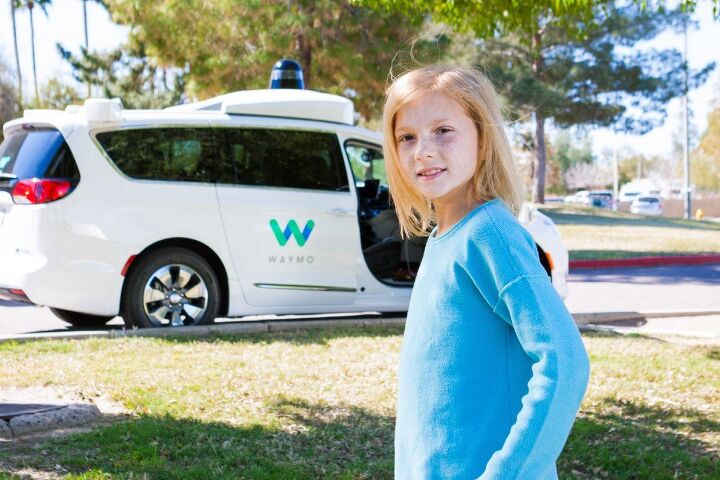




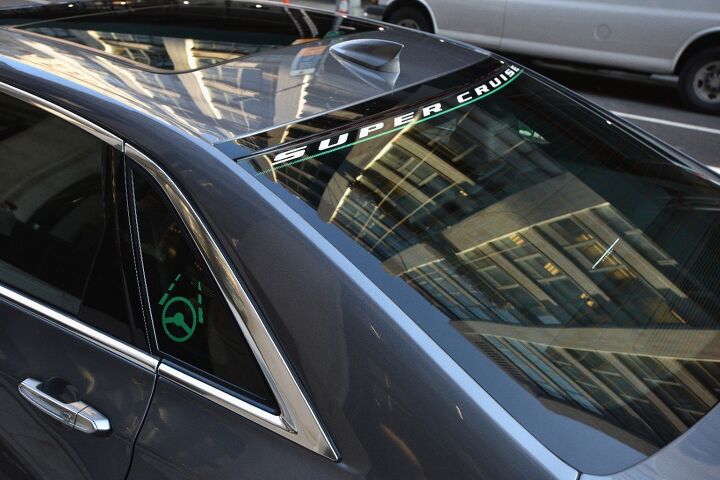


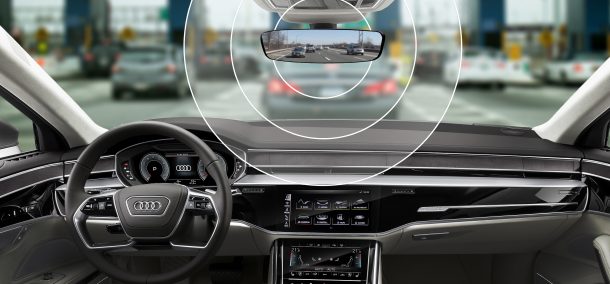

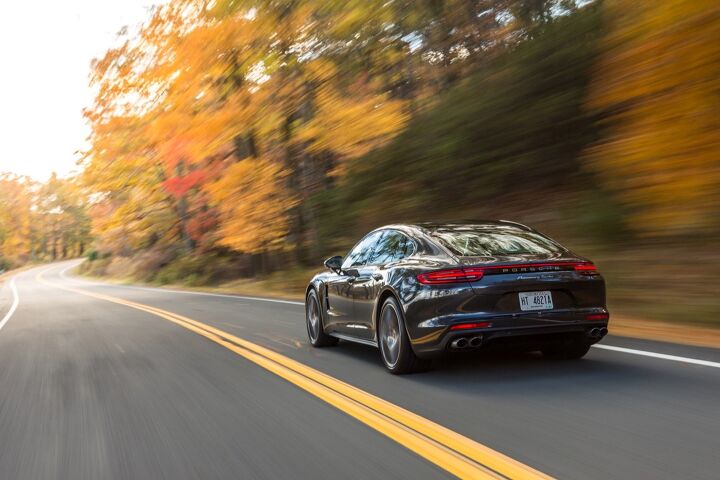





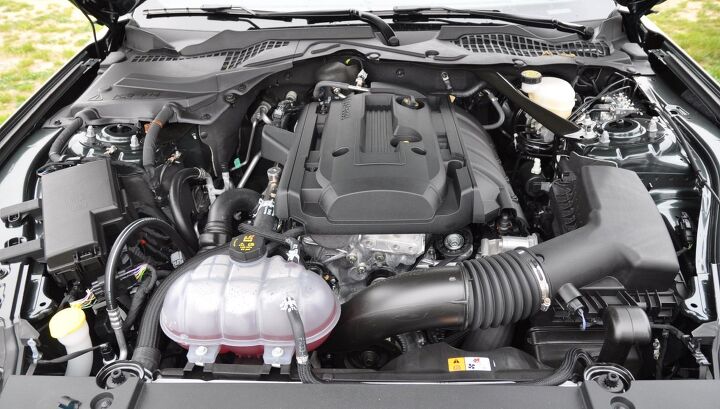

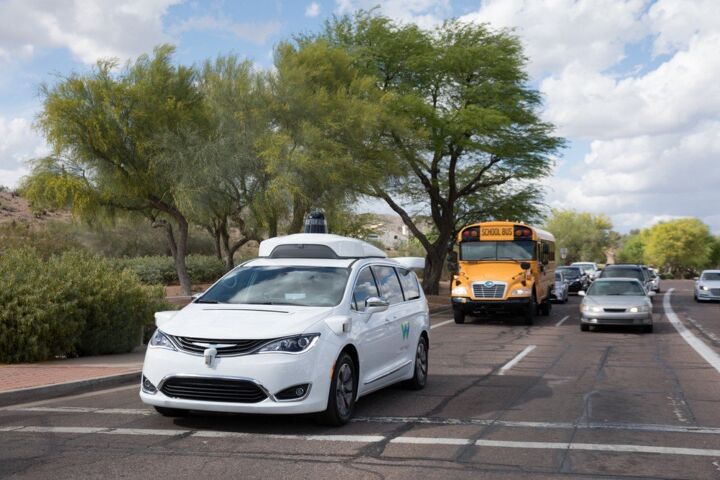
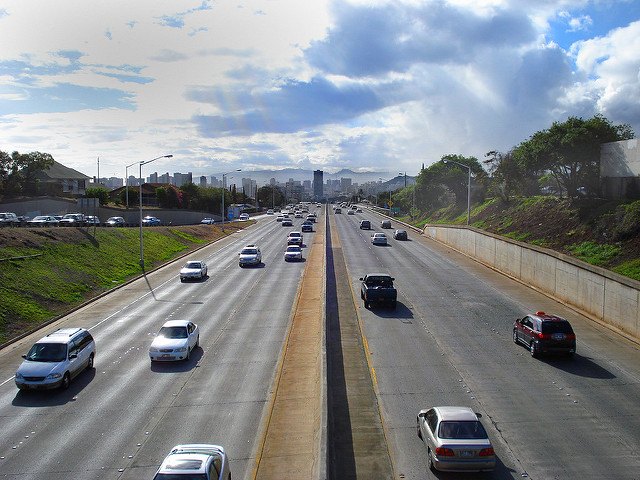
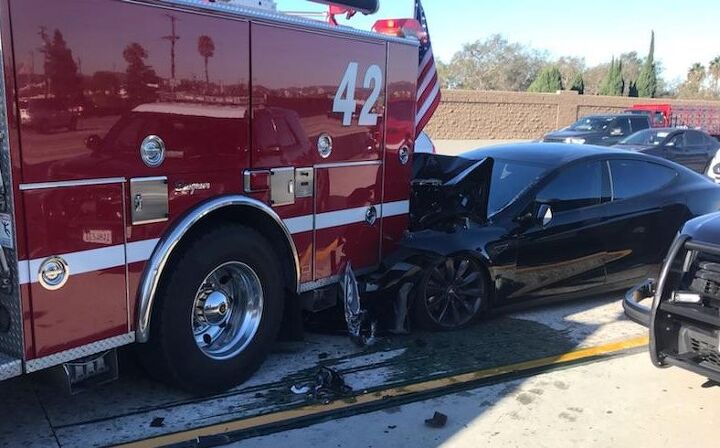

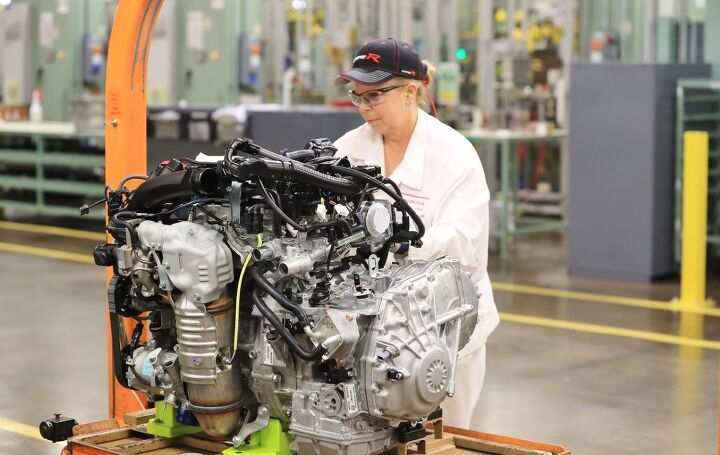
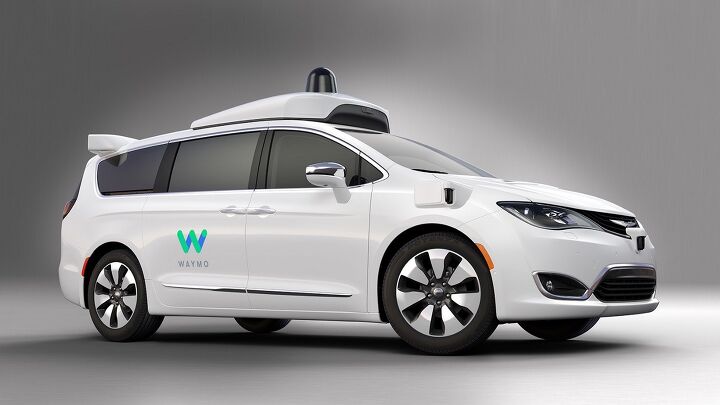
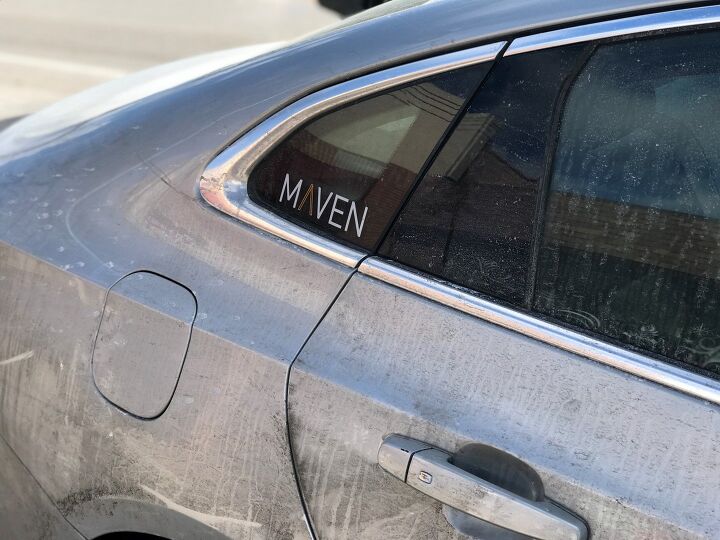

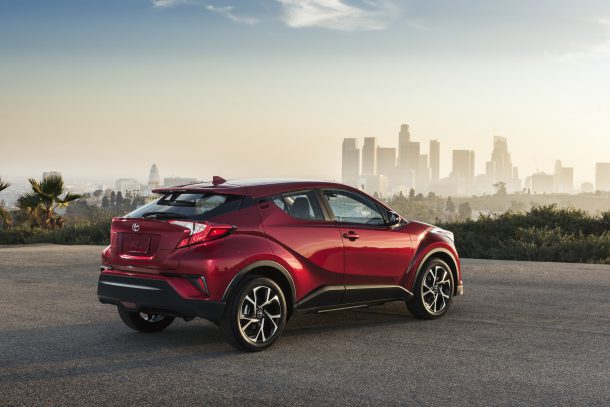



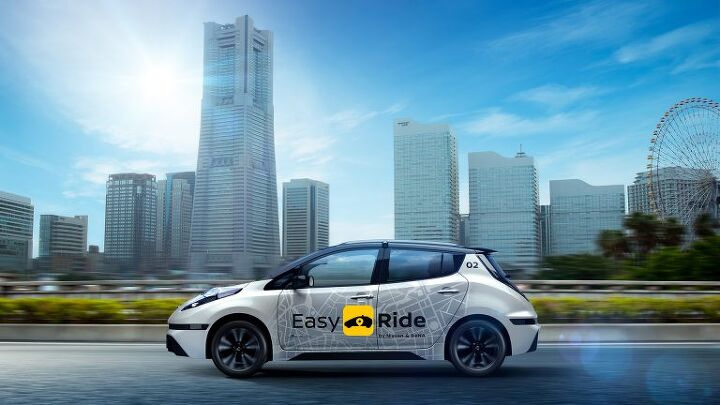

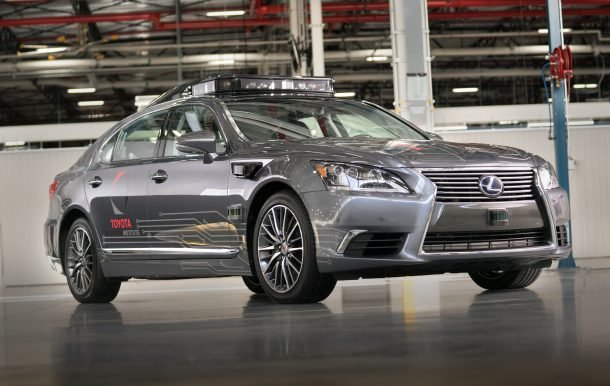



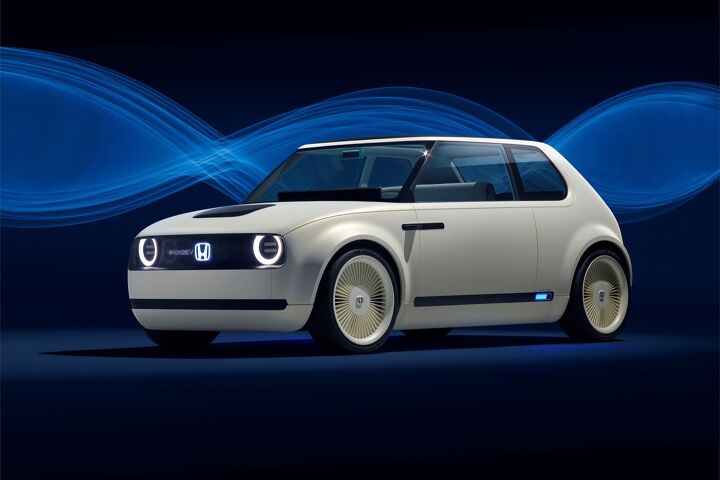








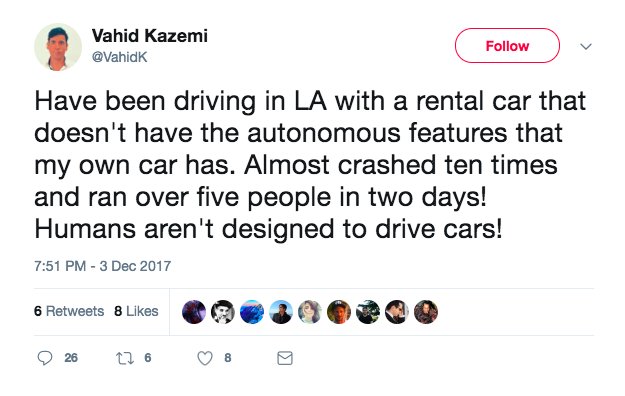
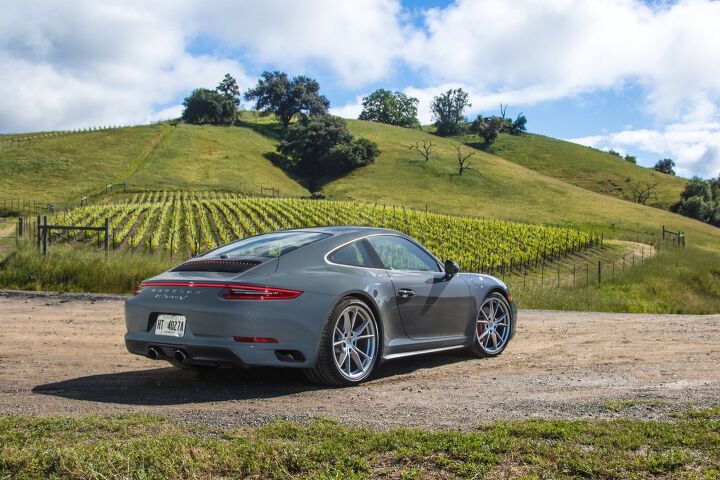
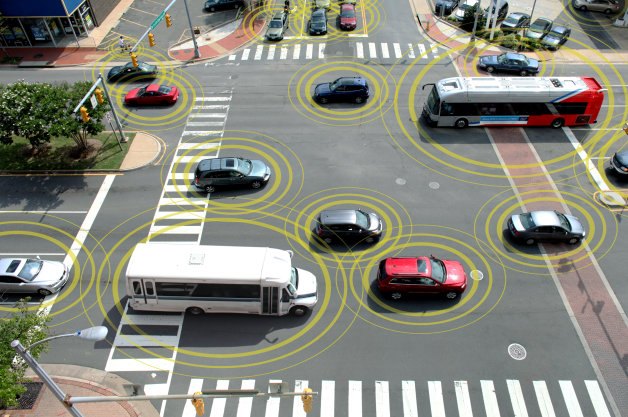



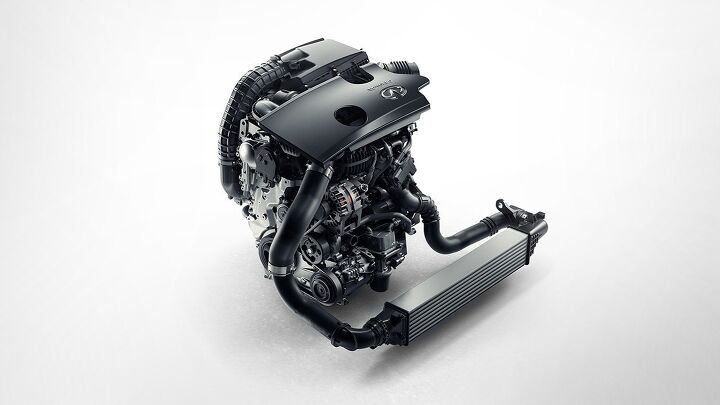












Recent Comments